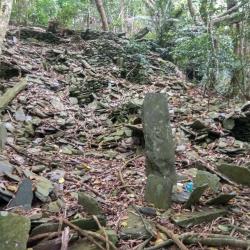Indigene Management Passage
Jinlun Hamlet
Jinlun Hamlet is located on the alluvial plain on the north bank of the Jinlun River estuary in Taimali Township, Taitung County. The traditional Paiwan name for the place is Kanaron, which was named after the abundant rosary pea plants there. It can also be called Hanzilun or Jiazinan. Jinlun hamlet existed as early as the Dutch colonial period, and once participated in the Eastern Local Conference held in Beinan in 1655. Due to its ideal location at the mouth of Jinlun River, it was an important place to dispatch coastal defense troops to garrison during the Qing period. During the Japanese occupation, police post, education center, and trade center were also set up there.
Liqiu Hamlet
Liqiu Hamlet, located in Jinfeng Township, Taitung County, was formed by the amalgamation of three settlements: Rulakes’she, Chushuiposhe, and Jiajiaduowanshe. At the end of the Japanese occupation, the Government-General in Taiwan enforced a collective migration into Rulakes’she. After the war, the National Government re-named the hamlet to Liqiu, which became the largest hamlet in Jinfeng Township.
Slate House Ruins in Zhuyege Hamlet
Zhuyege Hamlet is located in Jinfeng Township, Taitung County. The hamlet sits on the gentle slope of the Dalili Mountain ridge, about 525 meters above sea level. At the end of the Qing period, due to the farming of the land in the Zhuyegeshe, some of the tribesmen moved to the southern side on the right bank of Nabao River and built a new hamlet near Huangshe. Later, the tribesmen migrated away from the hamlet and formed Daoweilaoshe and Nabaoshe. In the early days of Japanese rule, the tribes of Zhuyegeshe moved to the vicinity of Huangshe. In the early post-war period, the National Government moved all the tribesmen near Huangshe to the mountain reservation land in Beili Village, Taimali Township. The hamlet was rebuilt and its name was changed to Xinxing Village.
